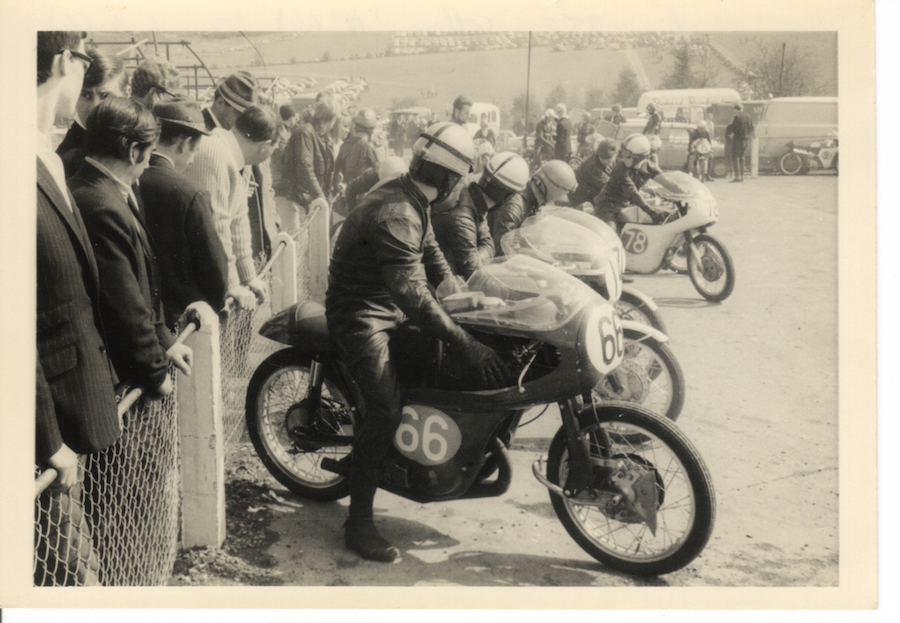Born in 1938, Kevin Cass completed his Leaving Certificate before taking on a mechanical engineering apprenticeship with the Port Kembla Steelworks, 10km south of Wollongong, NSW.
Many of the disciplines he studied appeared instinctive to young Cass, who’d grown up watching his old man repair clocks to supplement the family finances. And, naturally enough, maintenance of the family transport – a Harley-Davidson outfit – was carried out at home. By the time he was introduced to drill presses and lathes, Kevin was well and truly familiar with the inner workings of machines small and large.
Clocks held little interest, but motorcycles enthralled, and at 17 Cass was allowed to purchase a secondhand BSA Bantam. Denied either a road licence or a competition licence by his parents, he had to be content with competing in club trials and gymkhanas. However, with the assistance of luminaries such as Clem Daniel and Bill Morris – and Cass’s attention to detail – the little BSA proved a winner.

Kevin Cass (Bultaco) 1966 Ultra Lightweight TT
Finally, Cass obtained his road licence, and with it an Ariel Square Four – on which he built a frame to transport his now unregisterable, highly strung Bantam.
Despite successful outings on a Greeves, a BSA 500 and a DKW-powered dirt tracker, Cass’s riding and tuning ability kept the Bantam in the limelight, winning the Australian Short Circuit Titles in 1962 and 1963, before converting the bike back to road trim for road racing. The Bantam, an early rigid-framed model, was clearly outclassed by the Honda Fours and Cass called time on local racing in 1964.
The Continent beckoned, and all available funds were put towards an old van to do triple duty as transport, accommodation and mobile workshop.
With some assistance from Cotton and Bultaco – and later Suzuki – Cass enjoyed three busy years overseas, marrying and starting a family between battles on and off the track – often over starting money with the cheese-paring promoters.
Cass’s Grand Prix CV – three starts for a third in the 1966 Ulster GP on a Bultaco TSS – doesn’t reflect the scores of wins he enjoyed in Britain, the numerous podiums on the Continent, or the pleasure rubbing shoulders with the world’s greats. Nor does his CV mention the discussions he had with German rocket scientist Walter Kaaden, who passed on some of the secrets of using back-pressure to gain better performance from two-stroke engines, information that Kevin held close to his chest when he returned to Australia in 1968.
Not exactly flush with funds, Kevin returned to his job at the steelworks but immediately used his overseas experience in his home workshop to build the first KBC (Kevin Brian Cass) Special – a Suzuki TR250-powered Bultaco – with which he had initial success against the dominant Yamahas, before he also switched to a Yamaha TR2 350 to win the 1969 Senior TT at Phillip Island.
Later that year Cass suffered a bad accident at Hume Weir, after which, out of concern for his family – and a new bub on the way – he stepped back from top-notch competition and took over Bill Morris’s bike shop in Wollongong.
This began a remarkable period of sponsorship from his new business; Murray Sale and Warren Willing (who both worked at the shop), Peter Stronach and Geoff Sim all benefitted from Cass’s generous support. And, in partnership with Lee Roebuck, he also sponsored Murray Ogilvie and Rickard Bassett. Later, Cass gave an up-and-comer called Wayne Gardner his first racebike, a Yamaha TZ250.

About to head out onto the Brands Hatch circuit in Kent aboard a 250cc Cotton
Long after Cass hung up his leathers, his specials remain in championship-winning form today.
In the three decades before he died in 2015 at age 76, Cass was an avid restorer, often manufacturing necessary parts from scratch.
His rebuilt Henderson Four outfit took him on a return trip to Perth as a prelude to re-enacting Arthur Grady’s 1924 circumnavigation of Australia.
He knew duplicating the conditions Grady faced in 1924 was impossible, but he could replicate Grady’s mount – a 1924 horizontally opposed twin-cylinder Douglas – and over 12 months, with very few parts originating from the same source, Kevin built a brand new one. With a rigid rear-end, rudimentary coil springs and a cruising speed that wouldn’t break the speed limit in a school zone, then 60-year-old Cass enjoyed a trouble-free loop of this continent, catching up with the many friends he’d made in a lifetime of motorcycling.
Read about Kevin’s Race bike now at City Coast Motorcycles Wollongong
By Peter Whitaker
